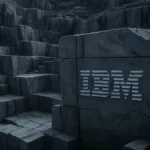There are currently many factors working against electric vehicles that effectively prevent them from going mainstream.
The biggest concern? So-called “range anxiety,” where drivers fear they may not be able to reach their destination without the car going dead on the side of the road. Another significant issue is charge time, as EVs currently require multiple hours to juice up.

As you may recall, Tesla was one of the original companies in the electric vehicle space with its slick Roadster, which offers an impressive driving range (claim) of 200 miles. The car is also fairly good looking, which was uncommon in the EV market at the time, and is fast too.
Of course, Tesla has since expanded its line with the Model S and the upcoming Model X SUV. These cars all share the same battery pack design, which apparently has a major flaw, or at least a giant caveat.
The problem? The vehicle’s battery pack, should it ever become fully discharged, will not charge back up. The only thing most of us can compare this sort battery issue with its computers and other gadgets. If your notebook battery refuses to charge up, it costs you a few hundred dollars at most to replace it. If the battery on your Tesla vehicle refuses charge back up, well, then, you could be looking at a cool $40,000 to get your car running again. Consider that this car sells in the six-digit range, the battery pack is obviously a huge chunk of the overall cost.
Should the battery turn into “a brick” on an owner, her or she could actually buy a new car for the price of the repair, which isn’t covered under warranty. You might think such incidents are quite rare, but there have reportedly been five case of this brick issue so far, with Jalopnik reporting that Tesla continues to downplay the battery bricking issue in public.
A potential Tesla brick situation would works something like this: a Roadster that is parked and simply left will reportedly turn into a brick (eventually) if not plugged in. Remember, the vehicle has a number of systems that are always on, so there is a constant parasitic load on the battery pack. Another troubling issue? The battery pack can actually be plugged in and still become a brick – if the owner uses an inadequate power supply or a defective cable.
The ultimate nightmare scenario? A person leaves their Roadster in long-term parking at the airport and goes away for a trip lasting a few weeks. If the car was driven to the point where the battery was nearly depleted and then parked for weeks, there is obviously a real danger that the battery pack could be bricked when the owner returns.
Another potential fatal flaw? A car left plugged in at home for a lengthy period of time is negatively affected by the power shutting off unexpectedly. Tesla’s owner’s manual for the Roadster states it takes approximately 11 weeks of inactivity to completely discharge the battery from a 100% charge. Frankly, this sounds like a genuine recipe for a potential financial nightmare.






